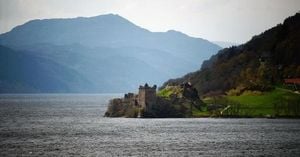Tragedy struck the Spanish holiday island of Tenerife over the weekend as powerful waves and a sudden tidal surge claimed the lives of three people and left at least fifteen others injured. The incidents, which unfolded on November 8, 2025, have sent shockwaves through the local community and raised fresh concerns about coastal safety, particularly as the Canary Islands head into a season known for unpredictable weather and rough seas.
According to emergency services cited by BBC, the deadly sequence began when a woman was swept into the Atlantic Ocean near the popular Puerto de la Cruz resort. Despite desperate rescue efforts, including those by bystanders like local waiter Pedro, who told Reuters, “As soon as I saw a man waving at me I took my clothes off, jumped to the water and I managed to grab three of them and save them. I couldn't save the woman because she passed away at that moment,” the woman could not be revived and was later identified by El Día as a 79-year-old Dutch national who suffered a fatal heart attack amid the chaos. Three others from the group swept away were seriously injured and transported to hospital for treatment.
Elsewhere on the island, a man was pulled into the ocean at Santa Cruz de Tenerife, while another man, reportedly a 43-year-old Spaniard fishing at La Guancha, fell from a considerable height into the water. Rescue services, as reported by AP and The Guardian, airlifted the latter to hospital, but he was pronounced dead upon arrival. The third fatality occurred when a man was found floating near El Cabezo beach in Granadilla, in southern Tenerife. Lifeguards and medical personnel attempted resuscitation but were ultimately unable to save him.
In addition to these tragic deaths, the tidal surge left a trail of injuries across the island. Emergency services noted that in four separate incidents, fifteen people were hurt. At Puerto de la Cruz, ten people were swept into the sea by a sudden, unexpectedly high wave that crashed into a pier. Three of these individuals sustained serious injuries. Meanwhile, at Roque de las Bodega beach in the north-eastern corner of Tenerife, at least five French tourists were injured after a strong wave towed them into the ocean.
Authorities had not been caught off guard. In fact, warnings had been circulating prior to the incidents. As ITV News and AP reported, officials had advised residents and tourists alike to avoid walking along coastal paths and to resist the temptation to take photos and videos of the turbulent seas. The public was urged to steer clear of exposed vantage points on piers and breakwaters, common gathering spots for visitors hoping to capture dramatic images of the waves. Despite these cautions, eyewitnesses such as Carlos, quoted by Reuters, said, “I warned people taking photos to move away from the waves but they did not pay attention.”
The warnings were not without reason. The Canary Islands, an archipelago off the west coast of Africa, are no strangers to sudden and violent sea surges, particularly during autumn and winter months. Weather authorities indicated that sea conditions were expected to worsen, with swells reaching two to four meters, and placed the region on heightened alert for coastal hazards. The advice to exercise “extreme caution” remained in place as officials monitored the situation.
For many, the events of November 8 were a grim reminder of the unpredictable power of nature. The combination of strong winds and tidal surges can transform a picturesque shoreline into a dangerous zone in a matter of moments. The fact that several of the victims were tourists highlights the particular vulnerability of visitors unfamiliar with local conditions. Tenerife, known for its striking volcanic landscapes and balmy weather, is a magnet for holidaymakers from across Europe—especially during the cooler months elsewhere on the continent.
Local media, including La Radio Canaria, circulated dramatic footage of the tidal surge, showing the moment a wave crashed into the Puerto de la Cruz pier, sweeping people into the sea. The images, widely shared on social media, underscored the dangers of underestimating the ocean’s force. The urge to capture such moments for posterity or social media can sometimes override caution, a point emphasized repeatedly by emergency officials in their advisories.
In the aftermath, questions are being asked about whether enough was done to prevent the tragedy. While authorities did issue warnings, the effectiveness of such advisories often depends on public compliance. The allure of the sea, especially during dramatic weather, can be irresistible, and some locals have called for stricter enforcement or even temporary closures of particularly hazardous coastal areas during storms. Others argue that personal responsibility must play a central role, especially when warnings are clear and frequent.
The incidents have also reignited discussions about the need for improved signage and more visible barriers at known danger spots. Some residents have suggested that multilingual warnings and increased patrols could help bridge the gap between official advice and visitor behavior. The fact that the victims included both locals and tourists from countries such as France and the Netherlands illustrates the international dimension of the issue and the importance of accessible, clear communication.
Meanwhile, rescue teams and emergency services have been widely praised for their rapid response under extremely challenging conditions. The use of helicopters, coordinated medical teams, and the bravery of ordinary citizens like Pedro have been highlighted as bright spots amid the tragedy. However, as the island community mourns, the focus remains on ensuring that such incidents are not repeated.
As Tenerife and the wider Canary Islands brace for more turbulent weather in the weeks ahead, the lessons of this weekend’s events are clear. The ocean’s beauty is matched only by its unpredictability and power. For locals and visitors alike, heeding official warnings and respecting the sea’s might is not just good advice—it’s a matter of life and death.
The island’s beaches and promenades are expected to remain under close watch as authorities continue to monitor sea conditions. For now, the community is left to grieve the loss of life and reflect on how best to balance the joys of coastal living with the ever-present risks posed by nature’s most formidable forces.






